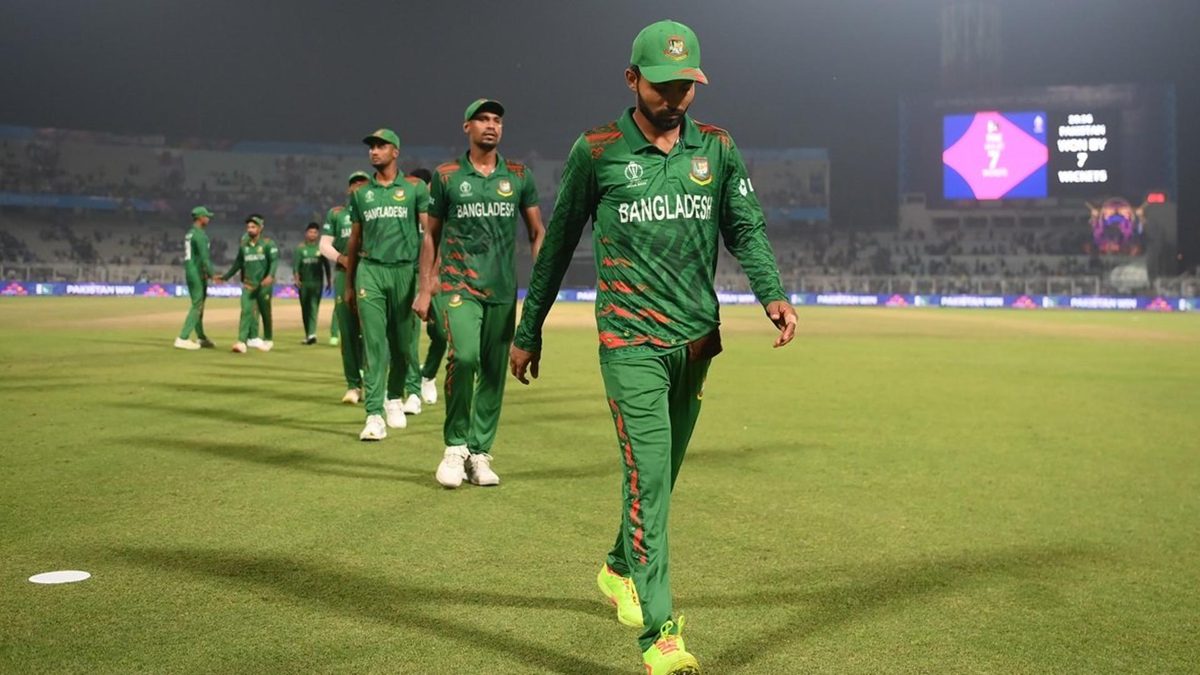
At the 2023 World Cup, Bangladesh qualified for the 2025 Champions Trophy and effected the first timed out in international cricket – but that was about it.
To bet on the World Cup with our Match Centre Partners bet365 head here.
Bangladesh finished eighth in the group stage table. It was perhaps a couple of spots below they were expected to. They had, after all, not lost a bilateral ODI series between 2016 and 2023 on home soil, not exactly the same conditions as in India but a reasonable approximation.
They had also stormed through the 2020-23 World Cup Super League to finish third, above India, Australia, and South Africa – three of the semi-finalists at the World Cup.
Sometimes, a side’s batting lets them down. Sometimes it’s the bowling. In Bangladesh’s case, it was both.
Take Mahmudullah away, and each of their batters averaged below 33. Of the bowlers who sent down 25 overs or more, no one averaged below 36. You cannot expect a team to do much when they fail on both counts across nine matches, especially if Shakib Al Hasan misses two of them.
Speaking of Mahmudullah, he was not in World Cup contention until very late (though BCB president Nazmul Hassan Papon never actually ruled him out). When he played, he did not bat in one match and at four different positions in the others, and nearly a third of his runs came in one innings, against South Africa, after the match was as good as over.
Shakib’s numbers – 26.57 with the bat, 36.55 with the ball – are barely befitting of a man who had lit up the 2019 edition, and had entered four consecutive World Cups as the top-ranked all-rounder in the world.
More was expected of Mushfiqur Rahim, who seemed a shadow of the man who averaged 52.76 across a four-year span between 2018 and 2021. He barely made two hundred runs.
Or Mustafizur Rahman or Taskin Ahmed, bowlers of unquestionable talent. Both men have been around for long enough to spearhead a young pace attack by now. They returned home with five wickets apiece. Without them rising to the occasion, their brilliant but raw fast bowlers looked radarless.
Najmul Hossain Shanto made two fifties and a 45 on either side of a string of six single-digit scores. Litton Das was inconsistent, as was the obviously gifted Towhid Hridoy. The dazzling Tanzid Hasan Tamim played some outrageous strokes – but not often enough.
Bangladesh fans were overjoyed when they qualified for the quarter-final of the 2015 World Cup. They finished eighth in 2019 as well, but they were tied on points with the sixth- and seventh-placed sides, and beat South Africa. There was much to celebrate and hope for.
This time, for the first time since 2011, they’ve had a World Cup worse than the previous edition. And that is not the worst bit of it.
Tamim Iqbal is unlikely to return after the pre-World Cup VideoGate. The BCB had not been favourable towards Mahmudullah or Mushfiqur. Shakib is around, but he may not be for a long time.
These are not merely Bangladesh’s four leading run-scorers: they are also the only ones with more than five, four, or – ignoring Mohammad Ashraful – even three thousand runs. Take Litton away, and the next name on that chart in the World Cup squad is Mehidy Hasan Miraz, with 1,247. That is not a lot of batting experience.
The bowling looks slightly sturdier, and one can only hope Bangladesh do not return to square one after Allan Donald’s departure. Even there, Mehidy is going to bear much of the burden once Shakib moves away. At the World Cup, too, none of his teammates got more wickets, and he finished fifth on the runs charts. You can see why Bangladesh had tried to slot him in the top five a la Shakib before a string of defeats forced them to adopt convention.
It is difficult to see the upside if the dismissal of a batter who did not face a ball is a team’s most talked-about story of the World Cup. Years later, Bangladesh may look at this edition as a change of guards, a pivotal moment that marked the eventual phasing out of their giants, paving way for the next generation.
The Champions Trophy is less than two years away, but with proper planning, they should be ready by then.








